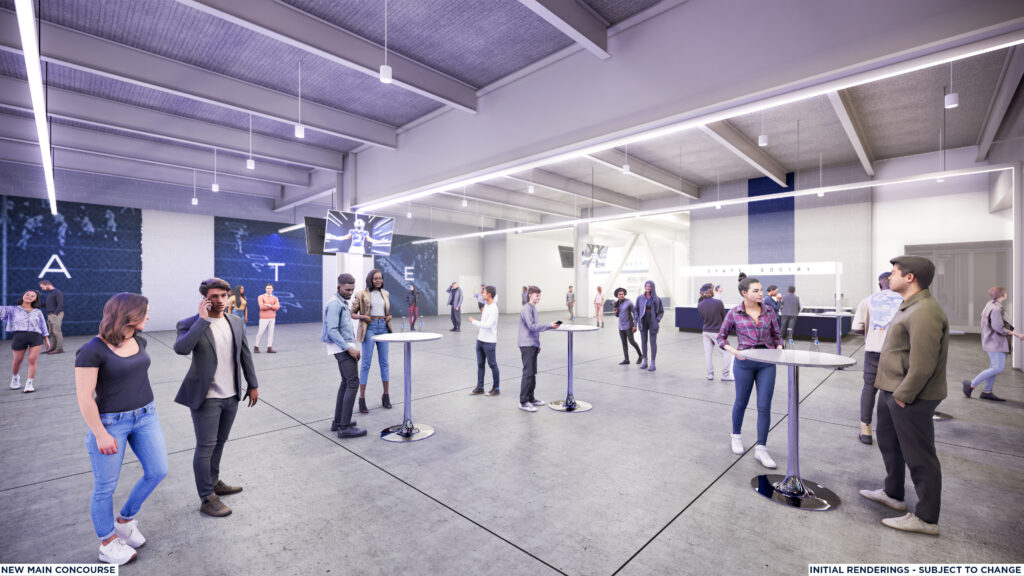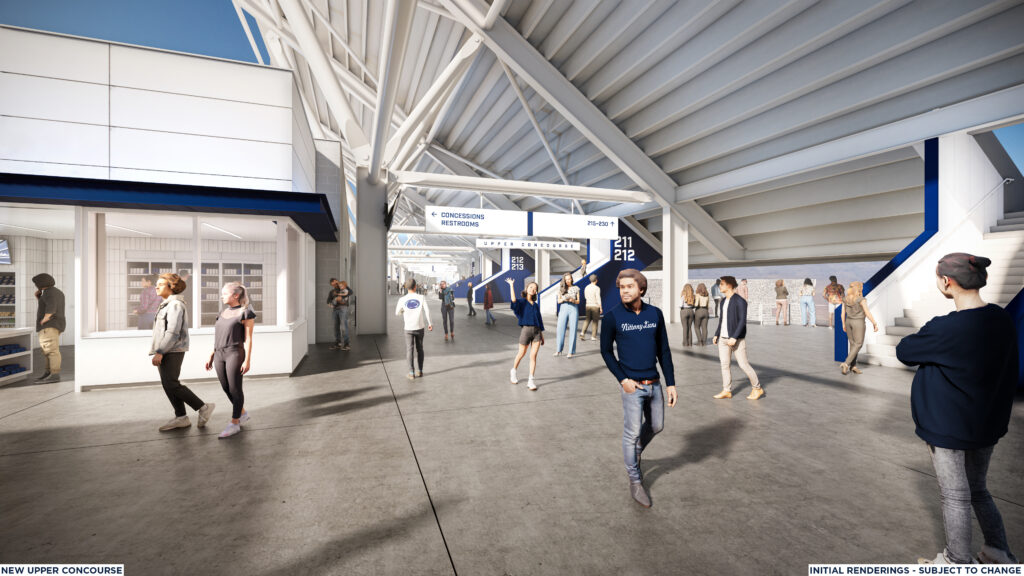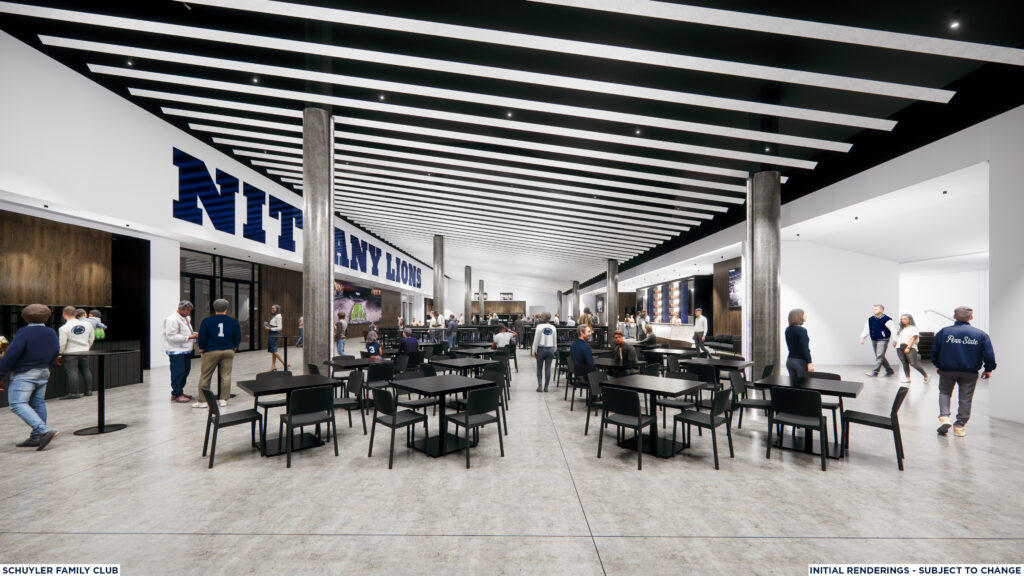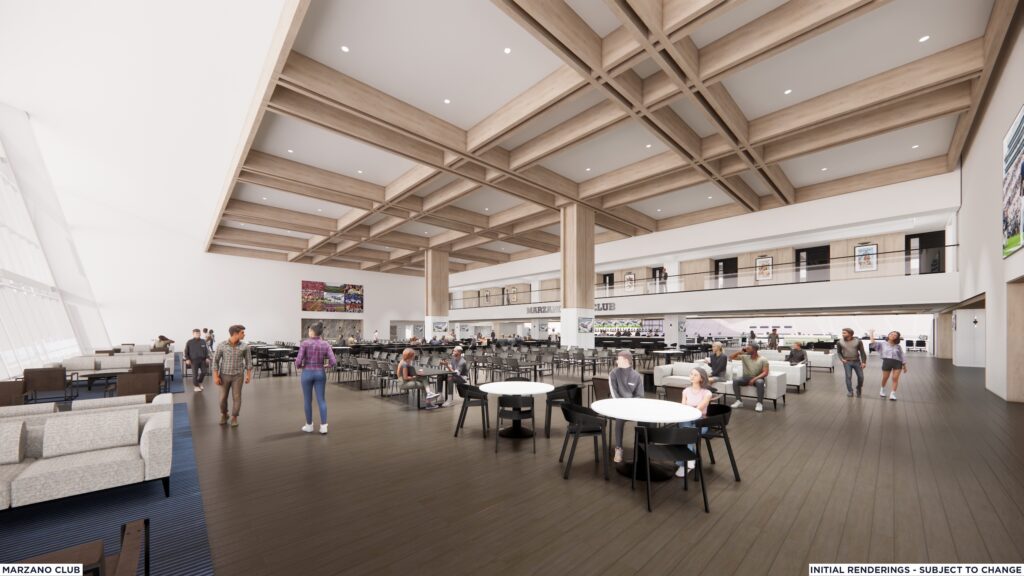Penn State has updated the details of its $700 million renovation of Beaver Stadium and released renderings of what the completed project could look like. The stadium’s press box was demolished in January, as was the upper deck and several ground level structures. Those were the first major steps toward the project’s completion prior to the 2027 season.
What’s the news surrounding the stadium’s revitalization?
REGARDING THE 2025 SEASON
With the removal of the press box and west side upper bowl, making room for the PAM Health Misitano Family Tower, Schuyler Family Club, Marzano Club and suites levels, there will be 7,900 temporary bleacher seats installed on top of the suite level prior to next season. There will also be temporary concession stands and restrooms.
The stadium’s capacity is expected to remain above 100,000 throughout the year despite these changes.

IMPROVED WI-FI, OTHER AMENITIES
The project is set to input 135 new wireless access points and increase Wi-Fi capacity throughout a stadium which has dealt with connectivity issues in the past. There will be improved and renovated restrooms and concessions once the project is completed, as well as an increase in the number of concourses, specifically on the west side of the stadium where concourse space will more than double.


LIGHTING, VIDEOBOARDS
Along with the addition of escalators, elevators and pedestrian ramps, intended to enhance the fan experience, the stadium will also introduce new stadium lighting. There will also be an upgraded north videoboard, which will pair with the ribbon boards on the west side and upper bowls that were introduced this past season.
SEATING OPTIONS
About 75% of the seating on the renovated west side of the stadium will hold a non-premium designation, in the lower and upper levels of the section. There will also be premium seating options and amenities on the west side that are “more in line with modern stadiums,” per a release. These will include the 20,000-square foot Schuyler Family Club and the 35,000-square foot Marzano Club, as well as other lodge boxes.

The renovations will make Beaver Stadium a year-round venue, one the Penn State says will provide more revenue-generating opportunities and further support for all of the university’s varsity teams.
“The improvements we made on the east side following the 2023 season have enhanced fan experience and circulation throughout the building. Our next phase will modernize the west side of Beaver Stadium while maintaining its historic roots,” athletic director Patrick Kraft said in a statement. “As we continue to make these changes, we only further enhance our stadium, making it one of the most intimidating places to play in the country. This project is not just a project for football, it is one that will impact all 31 sports teams at Penn State, our campus community and the Centre Region for years to come.”
According to the athletic department, 800-1,000 tradespeople will be work working on the project each of the next three summers, with 450 workers on site daily at the peak of the project, creating $15 million in regional economic impact.
Penn State’s Board of Trustees approved an initial $70 million for the Beaver Stadium renovation in 2023 and authorized up to $630 million more in May (with two members voting no and three abstaining). Penn State officials said no tuition or tax dollars will be used, and the project will be financed by university-backed debt to be paid by the athletic department, along with donations.
The project has received at least $70 million in major gift donations, according to releases from the athletic department.




